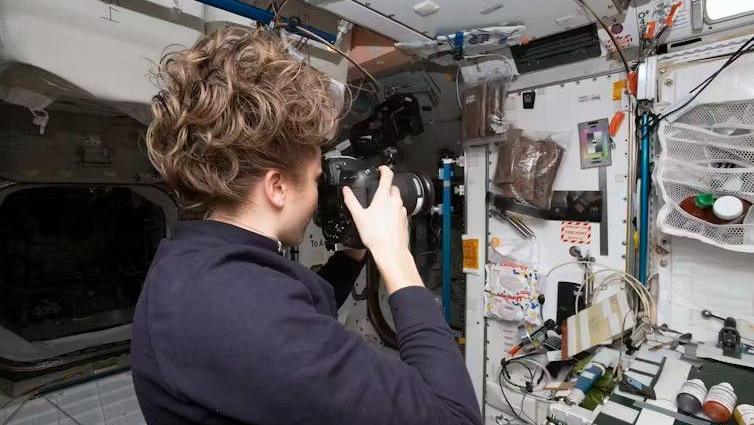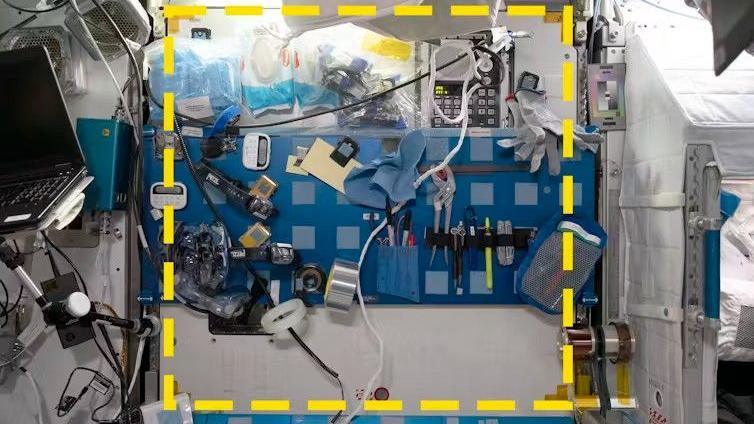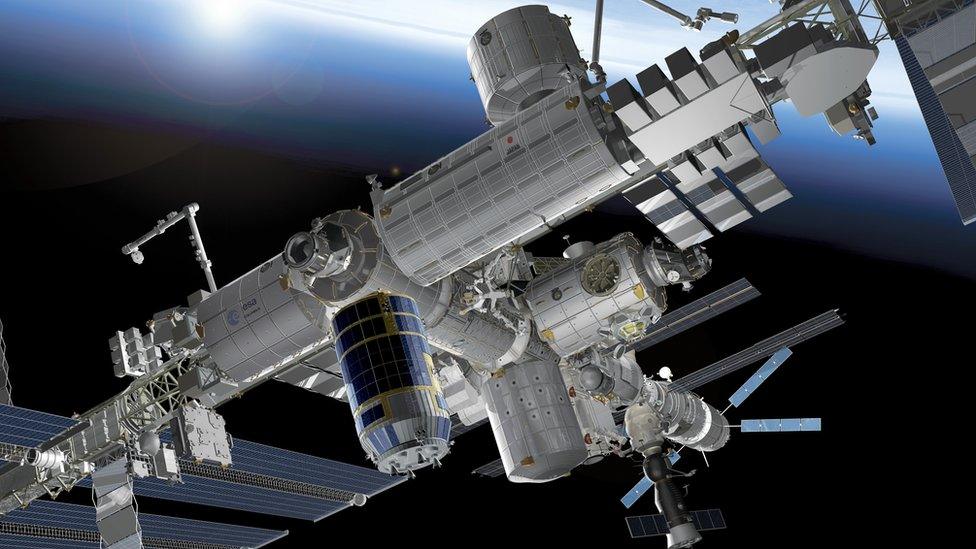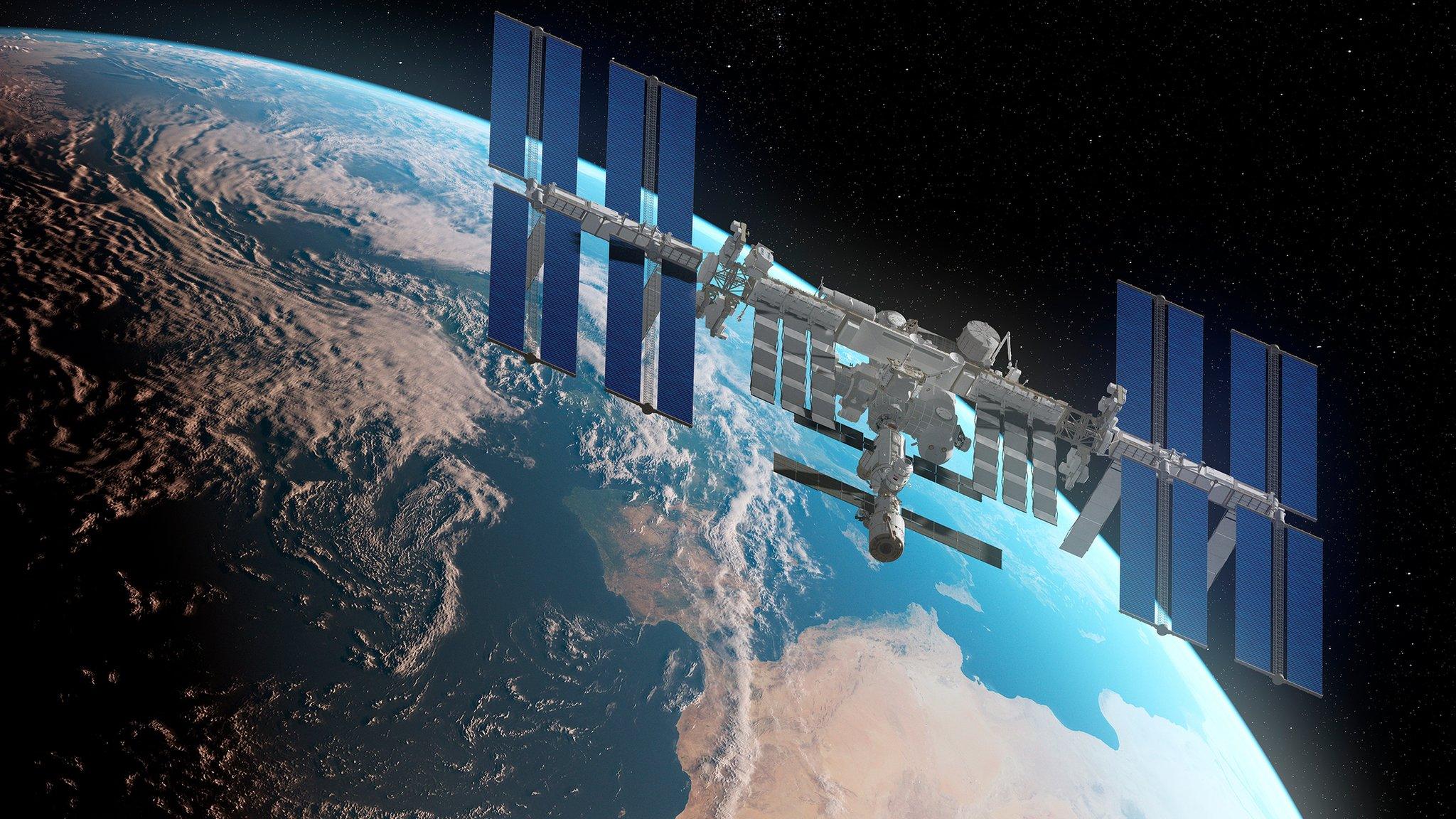First archaeological study in space reveals astronauts need more storage

NASA astronaut Kayla Barron photographs an archaeological sample area on the International Space Station
- Published
Archaeology is usually the study of human activity in the distant past, but this study goes where no archaeologist has gone before...
Space!
The first archaeological study of the International Space Station (ISS) has revealed how astronauts adapt their living space to meet their needs.
Astronauts carried out the fieldwork for the research while on board the ISS.
The ISS is a huge floating laboratory which was launched back in 1998.
Since November 2000, the space station has been constantly occupied with over 270 astronauts and cosmonauts visiting during that time.
Astronauts (people trained in the US, Canada, Europe and Japan to work in space) and cosmonauts (trained in Russia) travel 250 miles above Earth to live, work, and conduct science experiments in orbit.
How will the International Space Station come back to Earth safely?
- Published28 June 2024
Astronauts to collect microorganisms on spacewalk
- Published13 June 2024
Caught in 4k: Start-up wants to show Earth in ultra-HD
- Published21 March 2024
Just like traditional archaeology uses something called a shovel test pit - which are squares marked out at a dig - the team came up with a creative alternative.
The ISS crew marked out six sample squares in different locations and documented them with daily photos over a 60-day period.
The locations included workstations and a wall above the toilet where the astronauts keep their toiletries.
Researchers looked at how the spaces were used over the two months in 2022.
The study found that even if an area had been designed by Nasa for a particular function, it was repurposed according to the needs of the astronauts.
For example, an area which had been designed for maintenance instead became a place for temporary storage.

Square 03, a sample area that was designed to be used for maintenance, is mainly used for storage instead
Astronauts on the ISS experience microgravity which gives them a feeling of weightlessness.
The same applies to objects which is why everything needs to be fastened down to stop it floating around the station.
The researchers suggested that the Velcro used on the maintenance area made it the perfect place to put objects temporarily.
Just like many people's homes, it seems astronauts need more storage.
The authors of the paper which was published in the journal PLOS ONE said: "Our data suggests that designers of future space stations...might need to make storage a higher priority."
Currently the ISS is due to be bought down safely from orbit in 2031.
- Published20 November 2018

- Published3 November 2020

- Published6 June 2024

